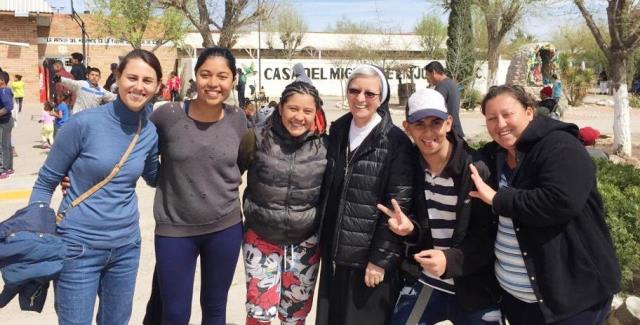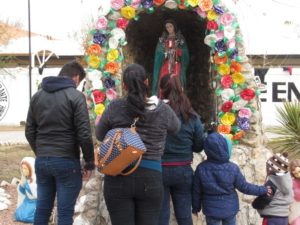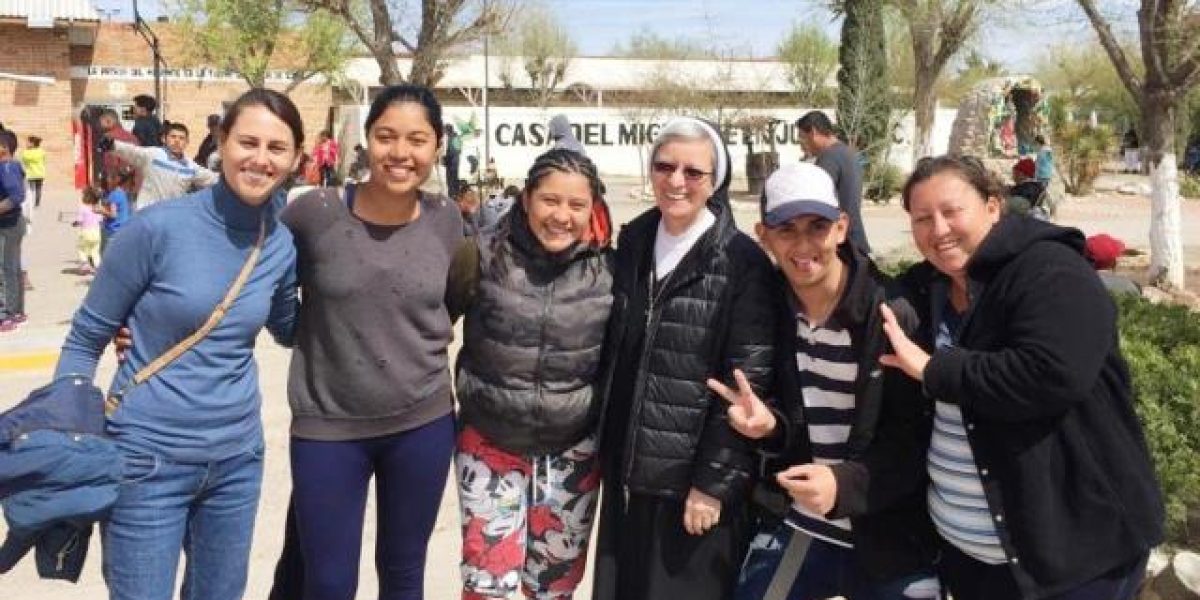The migratory phenomenon of the northern triangle of Central America (Honduras, Guatemala and El Salvador), has historical roots and is a product of cultural, economic and political integration of the countries that comprise this region.
Since the 20th century, and especially since the beginning of the armed conflicts, the populations of Central American migrants sought to settle mainly outside the region, especially in the United States of America, in order to escape the violence and improve their economic situation. With the advent of political and social peace now about two decades, and the trade integration of countries, also begins to display a phenomenon that has been less analyzed, the mobile populations at a regional level
During the last ten years, the cause of migration in the region changed, the main cause in 2012 was due to economic motives. From 2016 violence seized a central role in the phenomenon of migration and forced thousands of families to migrate in search of international protection.
The data points towards to the Central American region which is responsible for 90% of the solicitations of refugees in Mexico, and continues to be the place of the violence caused by “gangs” and organized crime, between 2016 to 2017 represents 68% which is the main reason of the departure from their countries of origin.
The forced displacement of migrants increased and at the same time the restricted immigration policy of the Government of the United States deports thousands of people, many at risk of returning to their country, are found in Mexico, a country of destination and also a large migratory corridor going to the United States.
The lack of information of the migrant population on their rights and privileges, increased their vulnerability and made the migratory corridor (Mexico-USA) a space where organized crime, drug trafficking, and the same forces of the State, abuse and commit serious crimes.

A feminine protagonist
Women carry with them a mysterious force, they are full of hope and desire to overcome all obstacles that cross their path. It is no different for migrant women who journey and advocacy for their children, their husbands and fight for their rights, in defense of their own lives. They are intrinsic female fighters, even more when they are threatened or when to threaten someone whom they love.
They search within their shattered heart at times a great power, embodied and rooted in faith which is felt and experienced. When speaking with young or more experienced women, all without exception demonstrate an intimate link with God and His mother, especially Our Lady of Guadalupe: “every morning I come here in front of Our Lady of Guadalupe and place my life and my families to give thanks and ask for protection.” “She is always with me,” stated Ester, a refugee living in Casa del Migrante, Juárez, Mexico City.
Forced migration
According to the annual report of theUnited Nations Population Fund(UNFPA), women constitute almost half of all international migrants worldwide: 95 million, or 49.6%.
The migratory causes are due to violence of organized crime, gangs, domestic violence in which they try to escape and flee. There are many who flee from their countries without looking back, and experience the worst of migrations, in a forced manner. The only thing they bring with them is the desire for safety and those of their families. Their desire to protect life, self-sufficiency and have tranquility. Little by little they will be empowered, courageous, capable to do anything to obtain peace, together with their children and a decent job.
 The reasons arevery strong for women to stop their activities in order to protect their lives and those of their children. They are migrants, workers, fighters and warriors who leave the little that they own for a vital question. The migratory risk is very large and violent, but it is the only means to be alive.
The reasons arevery strong for women to stop their activities in order to protect their lives and those of their children. They are migrants, workers, fighters and warriors who leave the little that they own for a vital question. The migratory risk is very large and violent, but it is the only means to be alive.
Marian Magdalena, 55 years old, from Honduras, her face is sad downcast. She has 7 children, the youngest is 27 years old, he was threatened and kidnapped back home, presently he is with her. They fled from the organized crime and persecution. Another son who is 29 years of age was killed by gang members. Fear increasingly overtakes them while in their country. This person had a shop and worked with dignity, she was pursued and had to give all her money to the gang (Mara) in her country. She brings with her the reports of death threats and the confirmation of her son’s kidnapping for to apply for asylum in the United States. God has been her consolation, she has strong faith that everything will go well and that she will be able to begin a new life in New York.
One of the dangers: Human Trafficking
According to the international organization on Labor (ILO), in all the world “there are 2.45 million trafficking victims who work in exploitive conditions. Estimated, every year there are between 600,000 and 800,000 women, men and children who are trafficked across international borders; of these, 80% are women and girls.” These are forced into prostitution sex, domestic chores not legalized, or work in factories where they are exploited.
Although trafficking of persons constitutes today the illicit trade that ranks third among the most lucrative, after the smuggling of drugs and weapons, profits are estimated between 7,000 and 12,000 million U.S. dollars per year. According to the estimations from ILO, once the victims have entered the country of destination, the syndicates receives another 32,000 million dollars annually, half in industrialized countries and one third in Asian countries.
Juana is 24 years of age from Honduras, a mother of a 3-year-old son, named Augusto. She sharedher experience and her journey in Mexico. She shared that she was trafficked and fled during a shootout between the police and her kidnappers. Juana received 8 bullets and one went through her neck and out her left eye. Upon speaking about her traumatic experience, tears began to flow from upon her face, she could no longer continue sharing her personal trauma.
The dream is on the other side
 St. Ireneo lived in the 2nd century, and had a personal expression: the glory of God is the life of man “and women”. The glory of God is the life of children, the life of migrants, foreigners, orphans and widows with a special attention. There is no greater glory for a father to see the realization of his children. It is with this hope and confidence in God and in the Virgin Mary, that migrants leave in search of a better life and security, working on “the other side”, crossing the border to reach the United States. We cannot deny the humanitarian crisis that in recent years has caused thousands of people to migrate in all types of immigration: by train, on foot through the mountains, deserts, and difficult roads. However, there is a human and divine force that makes them leave in search of their dreams and their goals in order to find the “promised land” and begin a new life, although it is not easy “on the other side”, but it is an opportunity. On this route it is perceived as a large family of sons and daughters of God fighting for a more dignified full life. “I want to live and learn about the U.S.A, I have hope that I will concretizing my dream, and God willing, I attain it”, said Helena, a migrant from Guatemala. And as Pope Francis stated to women: Your delicate, sensitivity and tenderness particular qualities enrich the feminine spirit, and represents not only a genuine force for the life of families, but the reality of the human vocation”.
St. Ireneo lived in the 2nd century, and had a personal expression: the glory of God is the life of man “and women”. The glory of God is the life of children, the life of migrants, foreigners, orphans and widows with a special attention. There is no greater glory for a father to see the realization of his children. It is with this hope and confidence in God and in the Virgin Mary, that migrants leave in search of a better life and security, working on “the other side”, crossing the border to reach the United States. We cannot deny the humanitarian crisis that in recent years has caused thousands of people to migrate in all types of immigration: by train, on foot through the mountains, deserts, and difficult roads. However, there is a human and divine force that makes them leave in search of their dreams and their goals in order to find the “promised land” and begin a new life, although it is not easy “on the other side”, but it is an opportunity. On this route it is perceived as a large family of sons and daughters of God fighting for a more dignified full life. “I want to live and learn about the U.S.A, I have hope that I will concretizing my dream, and God willing, I attain it”, said Helena, a migrant from Guatemala. And as Pope Francis stated to women: Your delicate, sensitivity and tenderness particular qualities enrich the feminine spirit, and represents not only a genuine force for the life of families, but the reality of the human vocation”.
Sr. Nyzelle Juliana Dondé, mscs
Servizio Itinerante – MSCS
Ciudad Juárez, Chihuahua- Messico
Translated to English: Sr. Noemia Silva, mscs
Foto: Sr. Nyzelle Juliana Dondé, mscs







